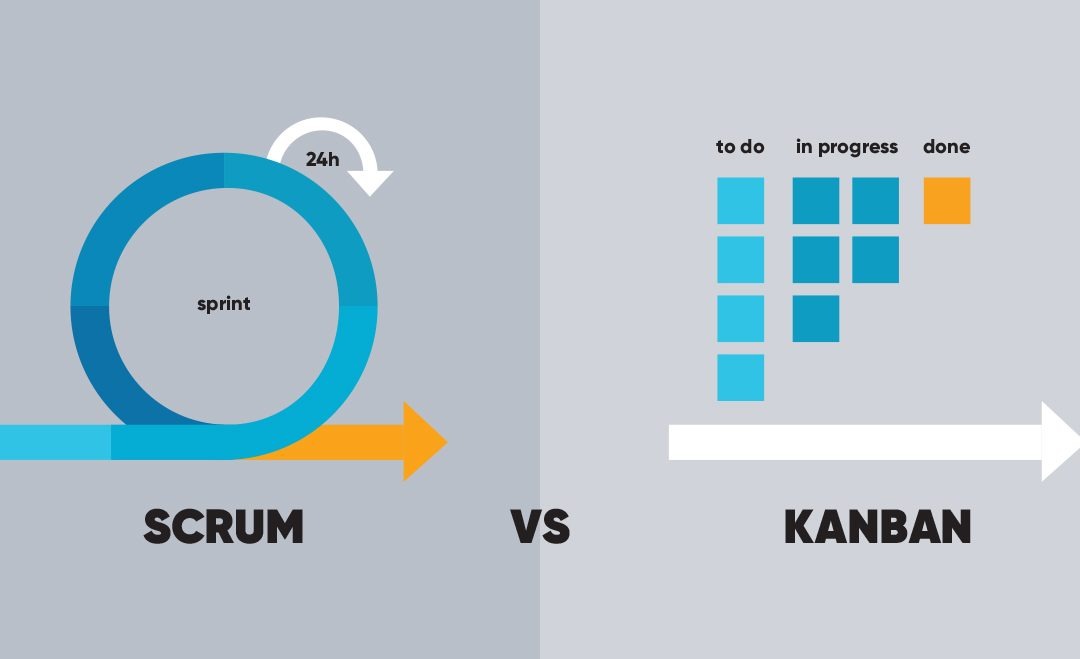Projects are no longer managed using pen and paper. Projects of the 21st century need project management software that enable continuous monitoring, simplify budget tracking, and encourage collaboration.
More than 70% of companies are using agile methodologies – Scrum or Kanban. However, a lot of professionals are having a hard time distinguishing between the two approaches.
The Scrum methodology focuses on teamwork, accountability, and iterative progress to encourage people towards a well-defined goal. Kanban, on the other hand, is a visual system for managing work as it moves through a process.
Even though both the technologies can work simultaneously, companies often opt for one of them. In this article, we will talk about the differences between Scrum and Kanban.
Scrum vs Kanban: Basic Features and Differences
Since Scrum and Kanban are both agile methodologies, they share a few common characteristics.
To begin with, both platforms limit Work in Progress (WiP) to promote agility. Both of them divide jobs into smaller, more manageable units.
What are the differences between Scrum and Kanban?
- Scheduling: In the Scrum approach, managers set sprints by determining clear deadlines for each aspect of the project. Kanban, on the other hand, encourages continuity with the responsibility of setting deadlines lying with the team leader.
- Duties: In Scrum, every team member is delegated with a specific task. However, in Kanban, roles for team members are not strictly determined, resulting in greater cooperation.
- Improvisations: Scrum does not really allow improvisations and changes in the middle of a sprint, while Kanban encourages modifications and promotes continuous adjustments.
- KPIs: The velocity of a sprint helps in understanding productivity in Scrum. And since sprints are the smallest pieces of work, they get executed very quickly. Kanban, on the other hand, considers the time taken to complete a larger portion of the project.
- Application: While Scrum works best with projects that have fixed deliverables, Kanban is better suited for flexible teams that need frequent changes in-between.
Advantages and disadvantages of Scrum
We have already discussed the important features of Scrum and Kanban. Let us now talk about the pros and cons of Scrum.
Pros:
- Short sprints: Since Scrum divides the work into the smallest pieces, the job gets done faster and more efficiently.
- Improved quality: As minor tasks are simpler to execute flawlessly, each sprint results in better quality work.
- Enhanced accountability: The overseeing of each specific goal by individual team members strengthens accountability.
- Unparalleled transparency: Every team member knows how the project is unfolding and what the other members are doing, and how.
- Goal-oriented work: This works best with a goal-oriented professional philosophy.
Cons:
- Scrum demands full focus: While this might be considered as an advantage, it can quickly become a con without a team of highly skilled, experienced professionals.
- Pacing issues: Weaker players in your team could slow down more agile members.
- Inaccuracies: A Scrum-powered project must be defined perfectly if you do not want to end up with lots of important inaccuracies.
Advantages and disadvantages of Kanban
Kanban also comes with a whole range of benefits and downsides.
Pros:
- Ease of use: Figuring out Kanban does not require years of experience in agile project management. It is a visually appealing platform that even first-time users can understand easily.
- Flexibility: Kanban is highly flexible, which is needed for broader projects that require real-time changes.
- Collaboration: Unlike Scrum, Kanban encourages collaboration and makes sure the entire team works together and delivers the desired result.
- It is a process: This solution focuses on continuous delivery and increases productivity in larger project cycles.
Cons:
- Lack of focus: The lack of strictly defined responsibility makes it easier to get distracted when using Kanban.
- Complexity: Since Kanban boards can easily become extremely complex, it can create clarity issues and confuse team members.
- Lack of timing: Kanban’s lack of timing parameters does not make it many project managers’ favourite.
Kanban vs Scrum: Which framework should you choose to work best for you?
Choosing Kanban or Scrum framework could either be an entirely personal choice or depend upon project requirements. Whatever it is, make sure it’s a well-thought decision. If you’re confused, try both frameworks and ask what went well and what went poorly in both cases.
Keep the following points in mind before making the final decision:
- Choose Kanban if you are looking for project flexibility.
- Choose Scrum if you are up for continuous devotion to projects.
- Go for Kanban if you prefer visualization of workflow through metrics.
- Scrum is recommended in case of intense human collaboration and rapid feedback.
MORE INFORMATION
As an experienced Oracle B2C Service provider and trusted Outstaff partner, we are happy to answer any questions remaining, or to help you boost your online business. Call us at +31 853 012 993, or click here to visit our website. We are looking forward at the opportunity to create just the perfect situation for you. Together we can make your (online) business a success!

